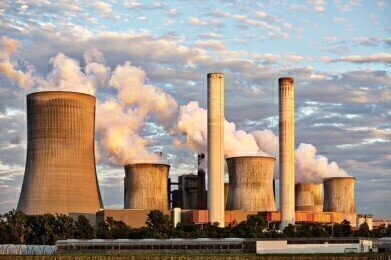Air Monitoring
An Introduction to Sulphur Dioxide
Apr 18 2019
Sulphur dioxide (SO2) is a colourless, toxic gas that can have serious implications for both individuals’ health and the environment. With greater awareness of the harmful pollutant, there has been a global effort to reduce SO2 emissions, with new legislation and improved technology. But where exactly does the gas come from and what else can be done to reduce the harmful emissions?
Sources of sulphur dioxide
There a number of sources of sulphur dioxide, both natural and man-made. The main culprits are hard coal, brown coal and natural gas, with fuel combustion accounting for 93% of UK SO2 emissions in 2016.
While coal-powered stations are one of the largest sources of emissions, SO2 can also be released during industrial processes, such as smelting, manufacturing sulphuric acid and extracting metal from ore.
On the other hand, the most common natural source of SO2 emissions is volcanic eruptions. In fact, the SO2 released into the air after an eruption can actually affect the global climate by cooling the Earth’s surface. Other natural sources of SO2 come from biological decay and forest fires.
Why is it harmful?
So, what exactly makes SO2 emissions dangerous? Firstly, high levels of SO2 can cause breathing problems, coughing, wheezing and chest tightness – especially with people who suffer from asthma. The health impacts were never more evident that the Great Smog of 1952 in London, with an estimated 4,000 people dying prematurely from bronchitis and pneumonia.
As well as seriously affecting human health, SO2 also has a detrimental impact on our environment. When SO2 emissions combine with water vapour, it creates acid rain. This can be seriously harmful to the environment, as it can damage trees, plants and acidify bodies of water, damaging aquatic habitats.
How to reduce emissions
Fortunately, after the Great Smog, the British Government passed two Clean Air Acts in both 1956 and 1968. The aim of these acts was to control and limit domestic industrial sources of pollution.
Since 1990, SO2 emissions have declined by a whopping 95%. However, it’s crucial that we continue to help decrease this pollutant due to it harmful impacts to our global environment.
One way to reduce emissions is to improve the efficiency of the conversion of fuel to electricity. It’s also important to look how at how fuel companies can alter the technologies and equipment they use to collect waste gases from fuel combustion. This can include removing sulphur from the fuel by coal washing or using solvent refined coal.
If you want to find out more about monitoring SO2 emissions, make sure you check out the e-learning session ‘Issues with Monitoring SO2 Emissions’.
Digital Edition
IET 34.2 March 2024
April 2024
Gas Detection - Biogas batch fermentation system for laboratory use with automatic gas analysis in real time Water/Wastewater - Upcycling sensors for sustainable nature management - Prist...
View all digital editions
Events
Apr 22 2024 Hannover, Germany
Apr 22 2024 Marrakech, Morroco
Apr 23 2024 Kuala Lumpur, Malaysia
Apr 23 2024 Kintex, South Korea
Apr 23 2024 Edmonton, AB, Canada


















